Get Rid of Windows 10 Ads, Office Offers and Other Annoyances
Microsoft started to sneak advertisements into the Windows platform with Windows 8 and they've only crept up further in Windows 10. You may recall, millions of users received Windows 10 as a free upgrade at launch, making the promos more forgiving. From so-called suggested apps in the Start menu, to nagging taskbar notifications and lock screen ads, enough is enough.
Thankfully it's easy to shut down most of these annoyances if you know where to look. We published this guide when Windows 10 was newly released, we've since revised all content so it's current with the latest OS updates.
Disable lock screen ads, or bypass the lock screen
To get rid of lock screen ads you'll need to disable Windows Spotlight, which is the default option for the lock screen background and displays different images as you log into the operating system. It also suggests Windows 10 features you may have not tried yet, throwing the occasional ad in the mix.
To turn off Windows Spotlight head to Settings > Personalization > Lock Screenand set the background to Pictureor Slideshowinstead of Windows Spotlight.
Right below this you'll find an option to switch off "Get fun facts, tips, and more on your lock screen" (this option is not presented with Windows Spotlightselected).

By using the Picture or Slideshow settings, you can still have revolving wallpapers on your lock screen, and you can even include the lock screen images – here's how.
You can also disable the lock screen so that you load straight to the Windows log-in prompt instead of having to click through the lock screen every time you sign into Windows 10. Here are two options:
Disable the lock screen via the Group Policy Editor:
- Entergpedit.mscvia Start or Run to open the utility
- Navigate to Computer Configuration > Administrative Templates > Control Panel > Personalization
- Double-click the policy "Do not display the lock screen" and choose "Enabled" on the window that opens and click Ok
Disable the lock screen via the Windows Registry Editor:
The same can be accomplished by adding two entries to your registry. Download our reg file package and double-click on the respective shortcut to apply the modification.
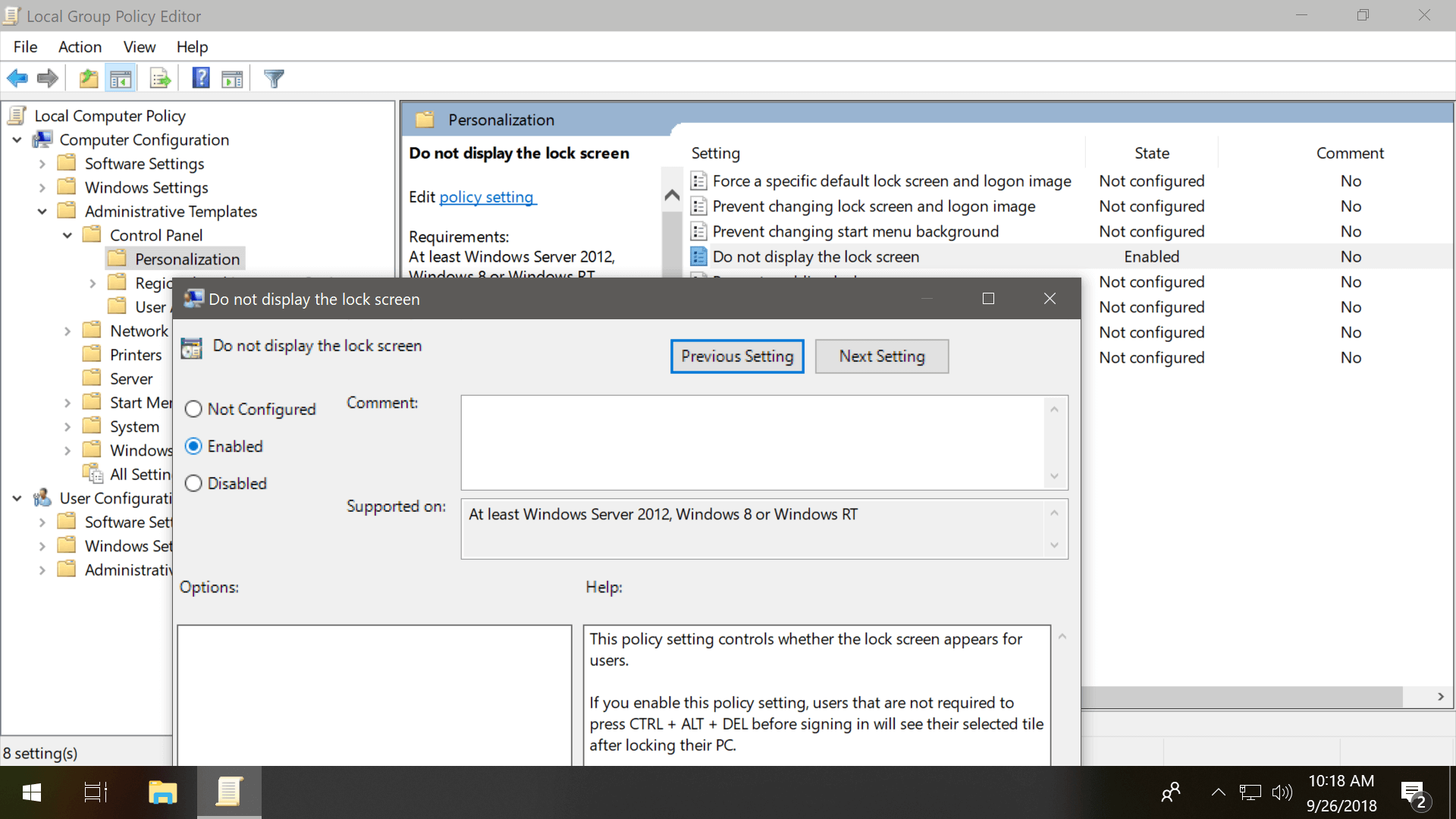
Make Cortana less prominent or kill it altogether
Microsoft's intelligent personal assistant can be annoyingly persistent to get your attention, and will bounce or show notifications and tips from time to time encouraging you to use it. The search box on the Windows taskbar takes up too much space for something that you can just as easily do by pressing the Windows key and start typing.
Microsoft removed the option to switch off Cortana with the Anniversary Update, but if you would prefer your search to stay focused on local files, settings, and apps, you can still curb her enthusiasm by right-clicking anywhere on the taskbar and hovering over "Cortana," which will present options to hide the feature or reduce the search bar to an icon.
Windows 10's assistant can also be shut down through the Windows Registry or the Group Policy Editor, which can be done manually or by simply downloading and double-clicking on these registry shortcut files we've made (all the files for this article are in the same download).
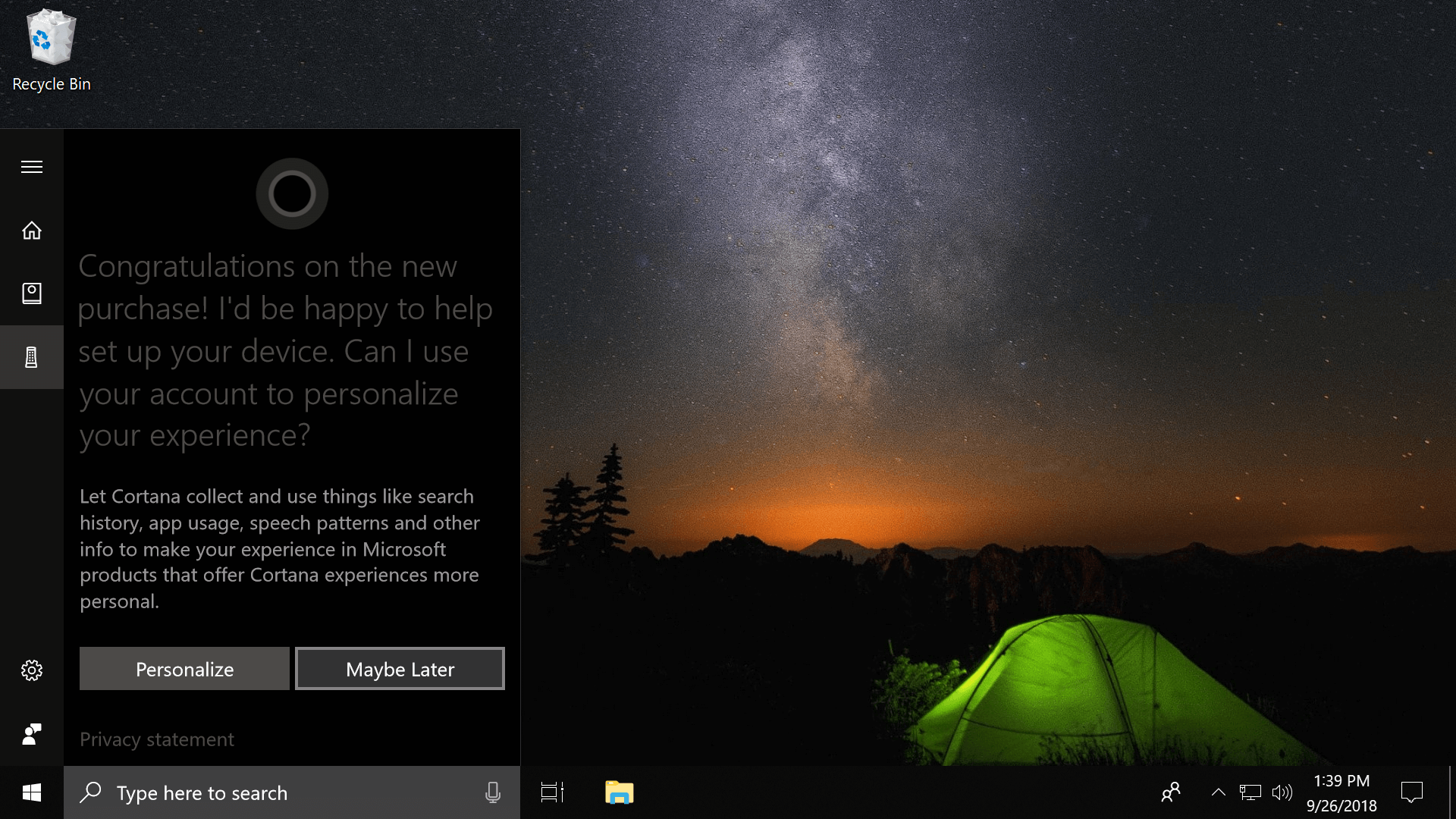
Banish Start menu 'suggestions,' or install a Win7-style menu
It's great that the Start menu is back in Windows 10 after the Metro interface in Windows 8, but the application launcher still isn't perfect. For instance, while the tiles UI makes it convenient to access your most frequently used applications and programs, it may also serve as prime real estate for advertisers, taking up valuable space in your Start menu.
To prevent annoying ads and suggestions from cropping up in your Start menu, head to Settings > Personalization > Startand set "Show suggestions occasionally in Start" to Off.
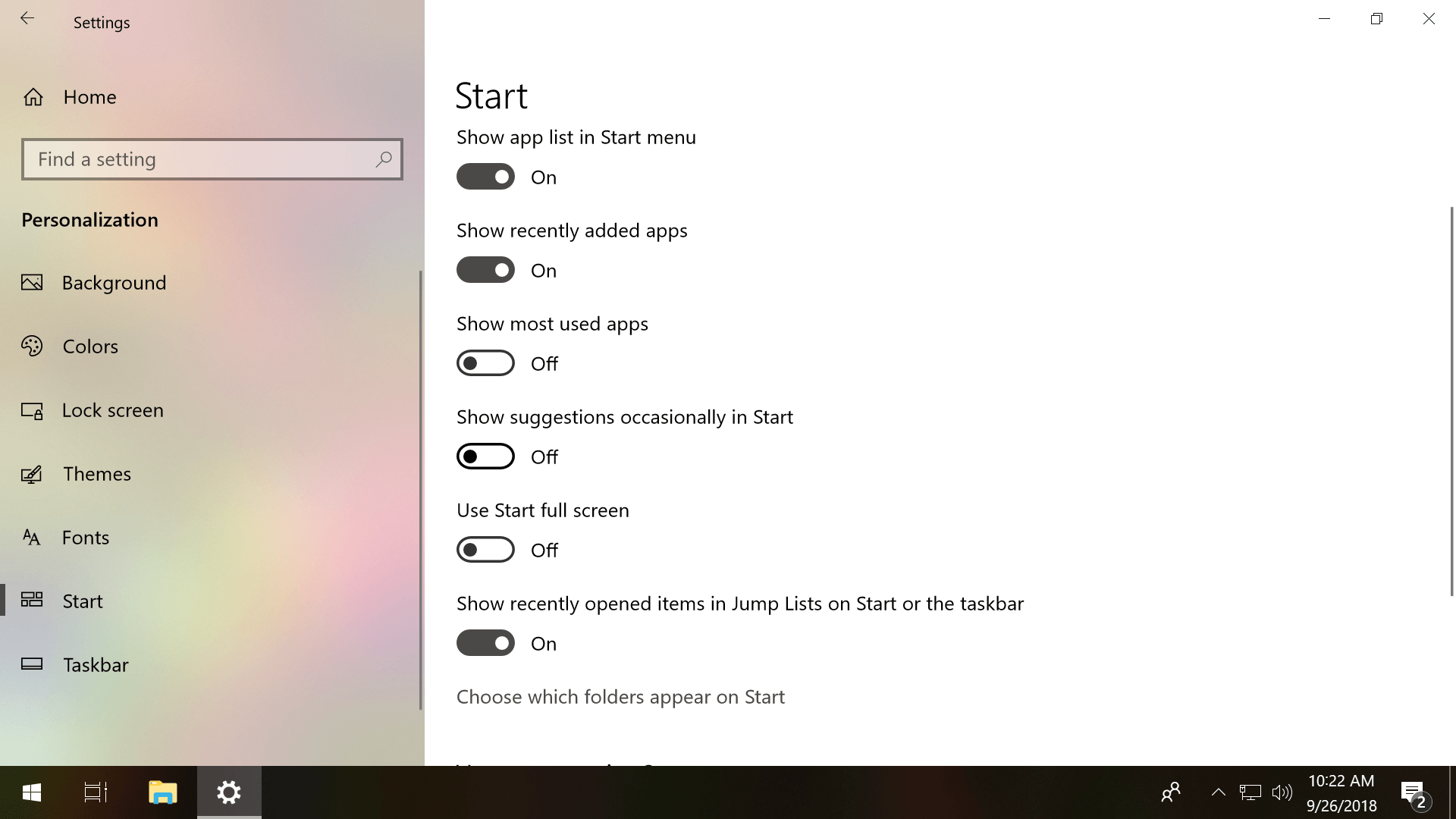
If you are not a fan of Live Tiles (the moving images) you can also disable those by right clicking on a tile and going to More > Turn Live Tile off, or you can select "Unpin from Start" to get rid of the tile entirely. By unpinning all tiles on the right side you can make a single column Start menu and regain some real estate as well.
Those of you who would prefer a Windows 7-style Start menu may also want to check out these third-party tools: Start10 or OpenShell.
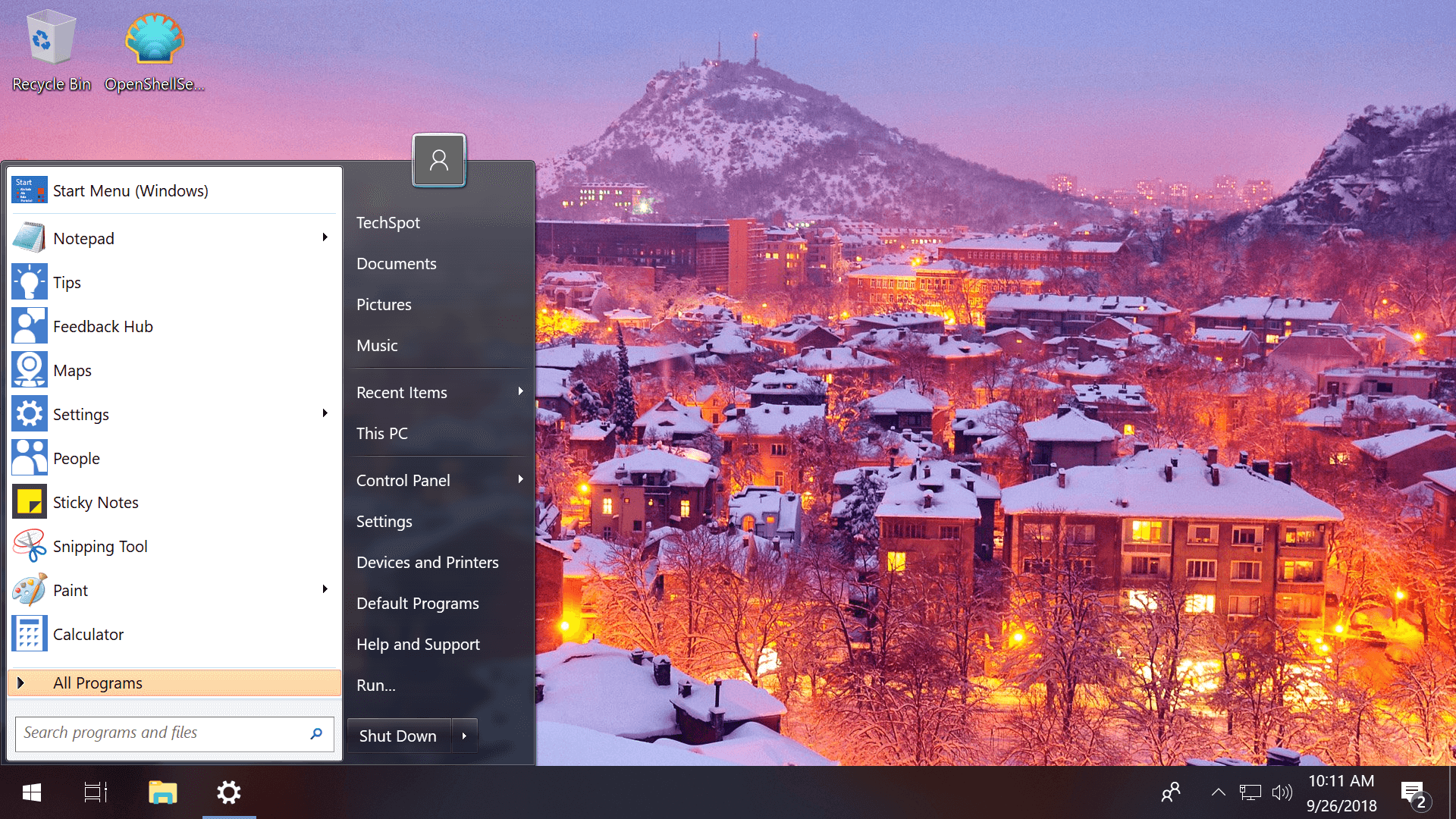
Disable ads in the Windows 10 File Explorer
Along with ads elsewhere around it's operating system, Microsoft has begun plugging services such as OneDrive and Office 365 directly in the Windows File Explorer.
These ads can be disabled by opening File Explorer and going to File > Change folder and search options > View, then uncheck the box next to "Show sync provider notifications" and click Apply.
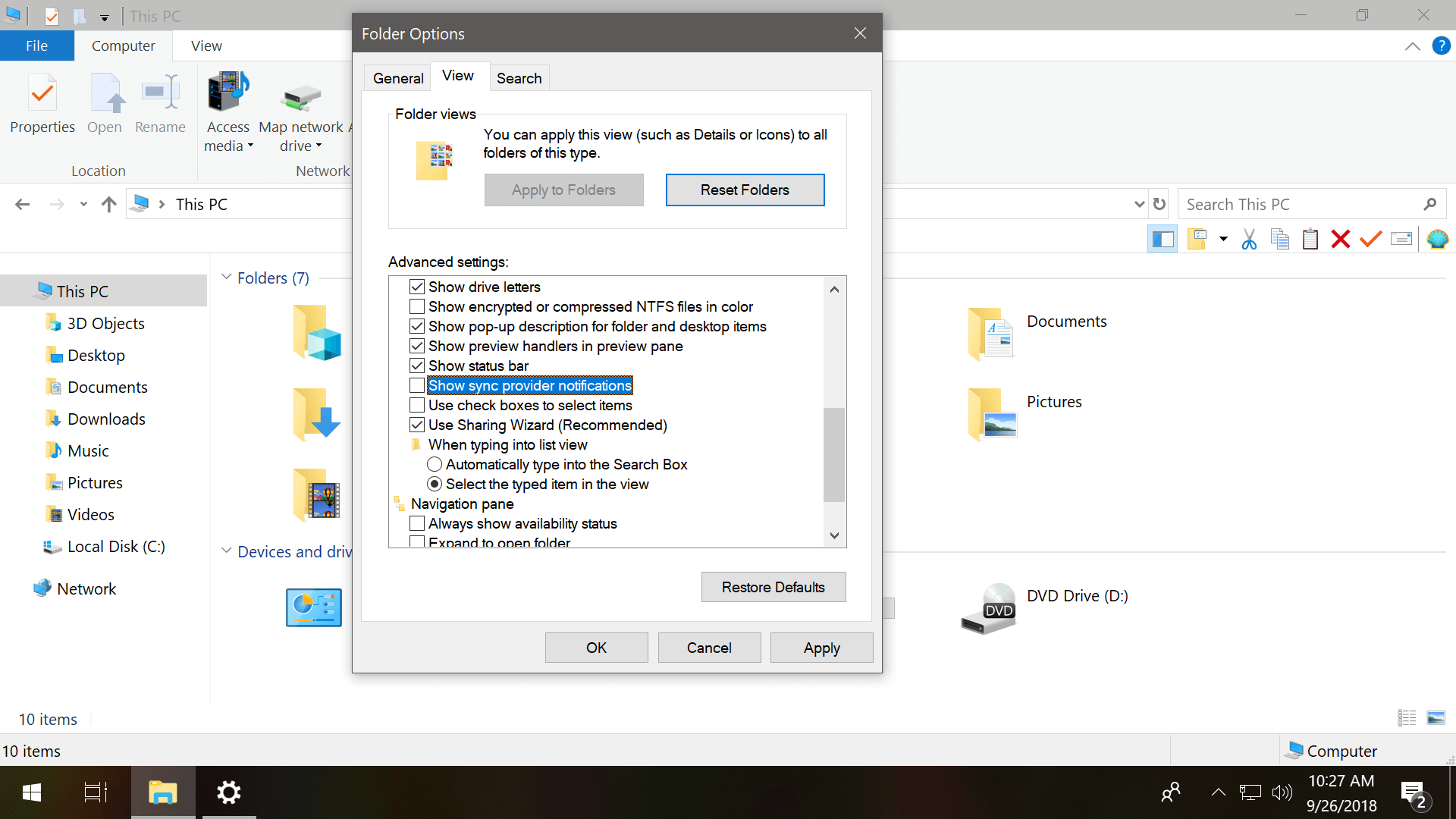
The File Explorer in Windows 10 also displays recommended downloads from the Windows Store when you go to share a file. These recommended apps can be hidden by right clicking on the "Share" window and unchecking "Show app suggestions on the share screen."
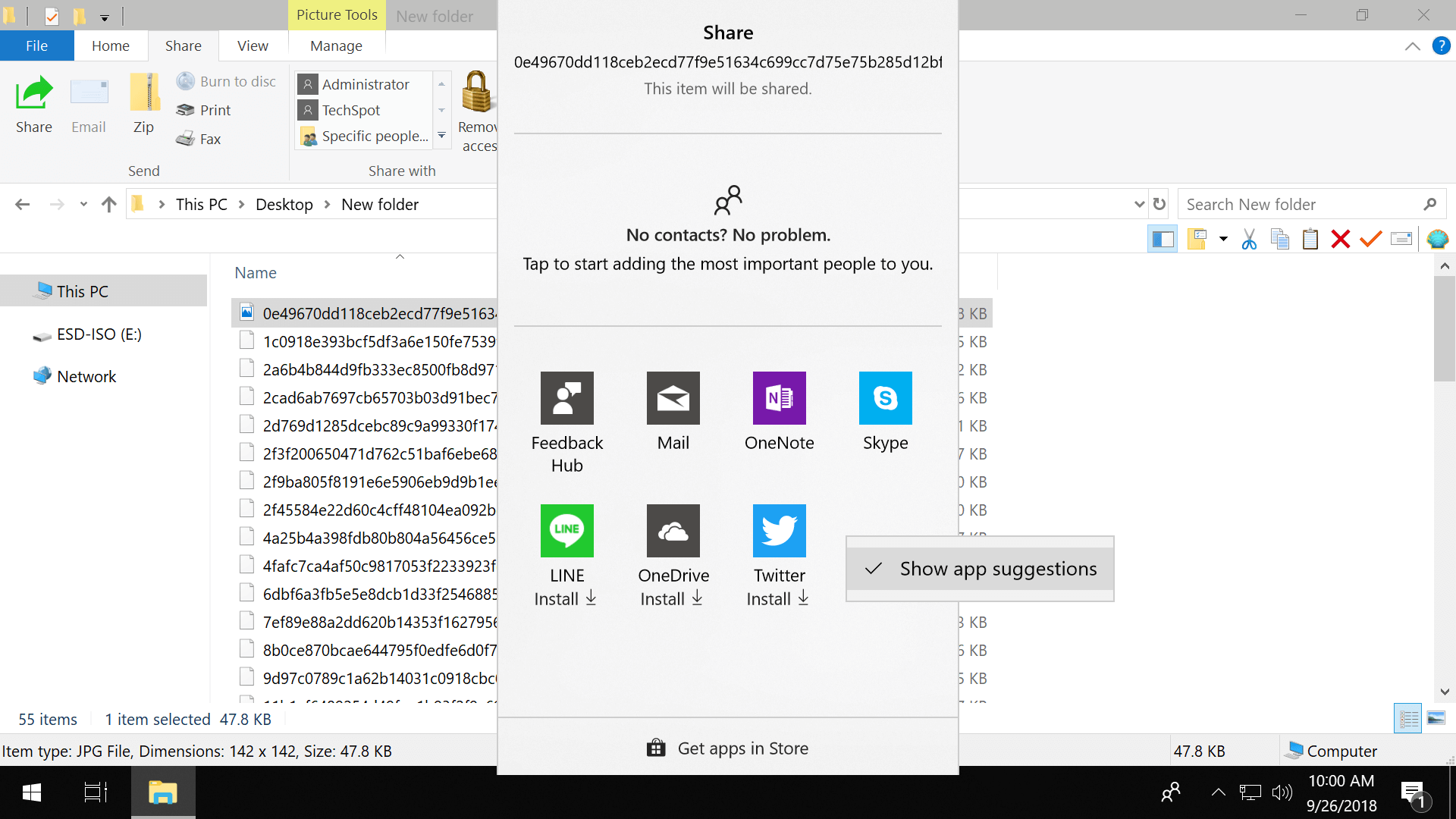
Disable online tips that appear in the Settings app
The top right corner of Windows 10's Settings app displays tips and help retrieved from Microsoft's servers. This can be disabled via Group Policy or Registry options as of the Fall Creators Update (version 1709):
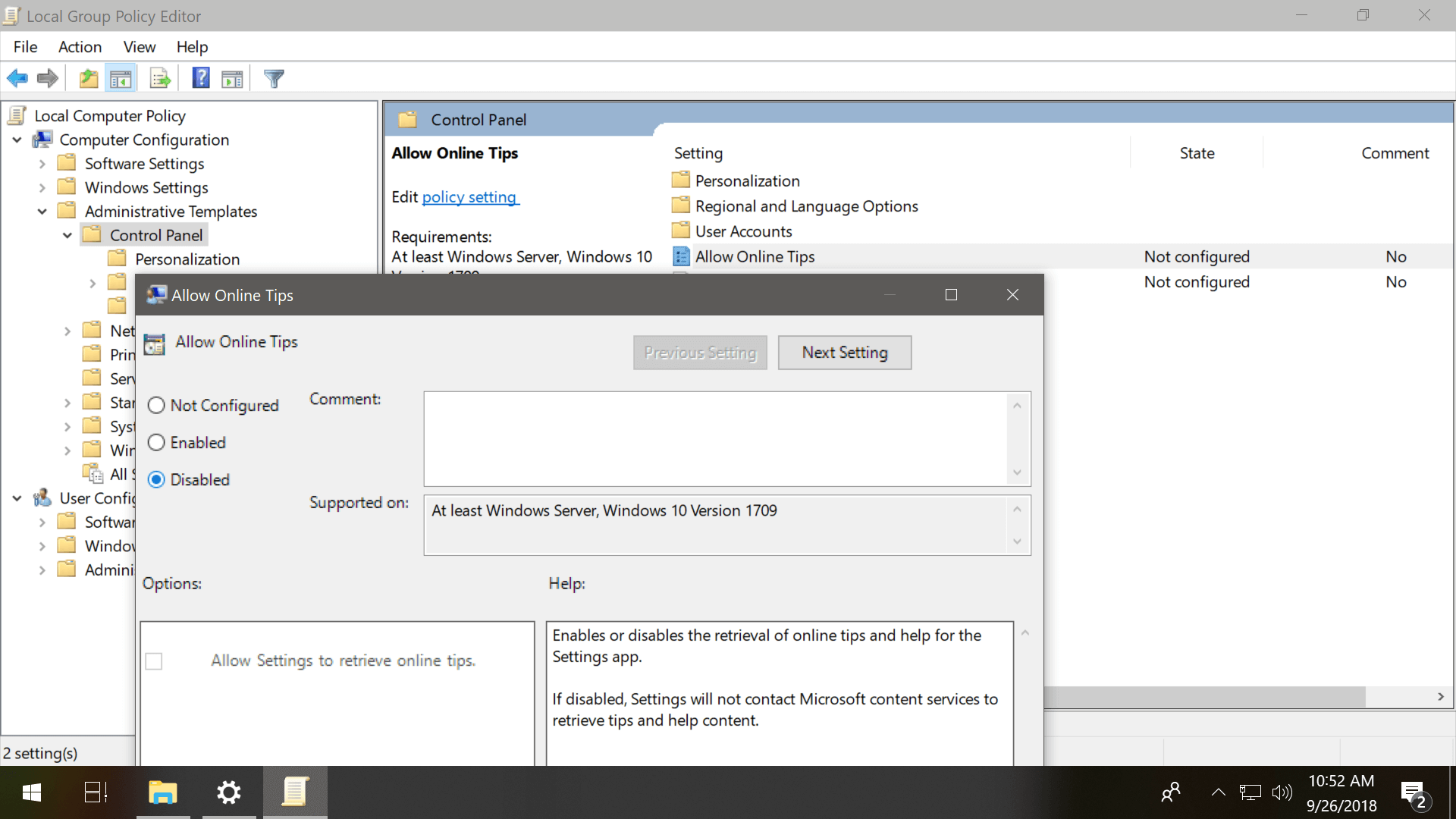
Disable from the Group Policy Editor:
- Entergpedit.mscvia Start or Run to open the Group Policy Editor
- Navigate to Computer Configuration > Administrative Templates > Control Panel
- Double-click the policy "Allow Online Tips" and choose "Disabled" on the window that opens and click Ok
Disable taskbar notifications, data collection and more ads...
Windows 10 is configured to show notifications that introduce new features in addition to displaying other "tips, tricks, and suggestions" which can include ads such as asking you to try Microsoft's Edge browser instead of the one you're using. Here's how to disable that:
Go to the Settings app > System > Notifications & Action and turn off "Get tips, tricks, and suggestions as you use Windows"

Similar settings you may want to disable:
- Disable ads from Windows Ink Workspace: Settings > Devices > Pen & Windows Ink > Uncheck "Show recommended app suggestions"
- Windows welcome experience:Settings app > System > Notifications & Actions > "Show me the Windows welcome experience after updates and occasionally when I sign in to highlight what's new and suggested"
- Disable Windows 10's ad-based data collection:Settings > Privacy > General > "Let apps use my advertising ID for experiences across apps"
Prevent settings from syncing & background apps from running
By default the operating system is configured to sync your account settings to Microsoft's servers when using an online Microsoft account with Windows 10.
The synced data includes your theme profile, passwords, language preferences, as well as ease of access and other Windows settings, which can be disabled individually or entirely by going to the Settings app > Sync settings > Settings > Accounts > Sync and turning items off.
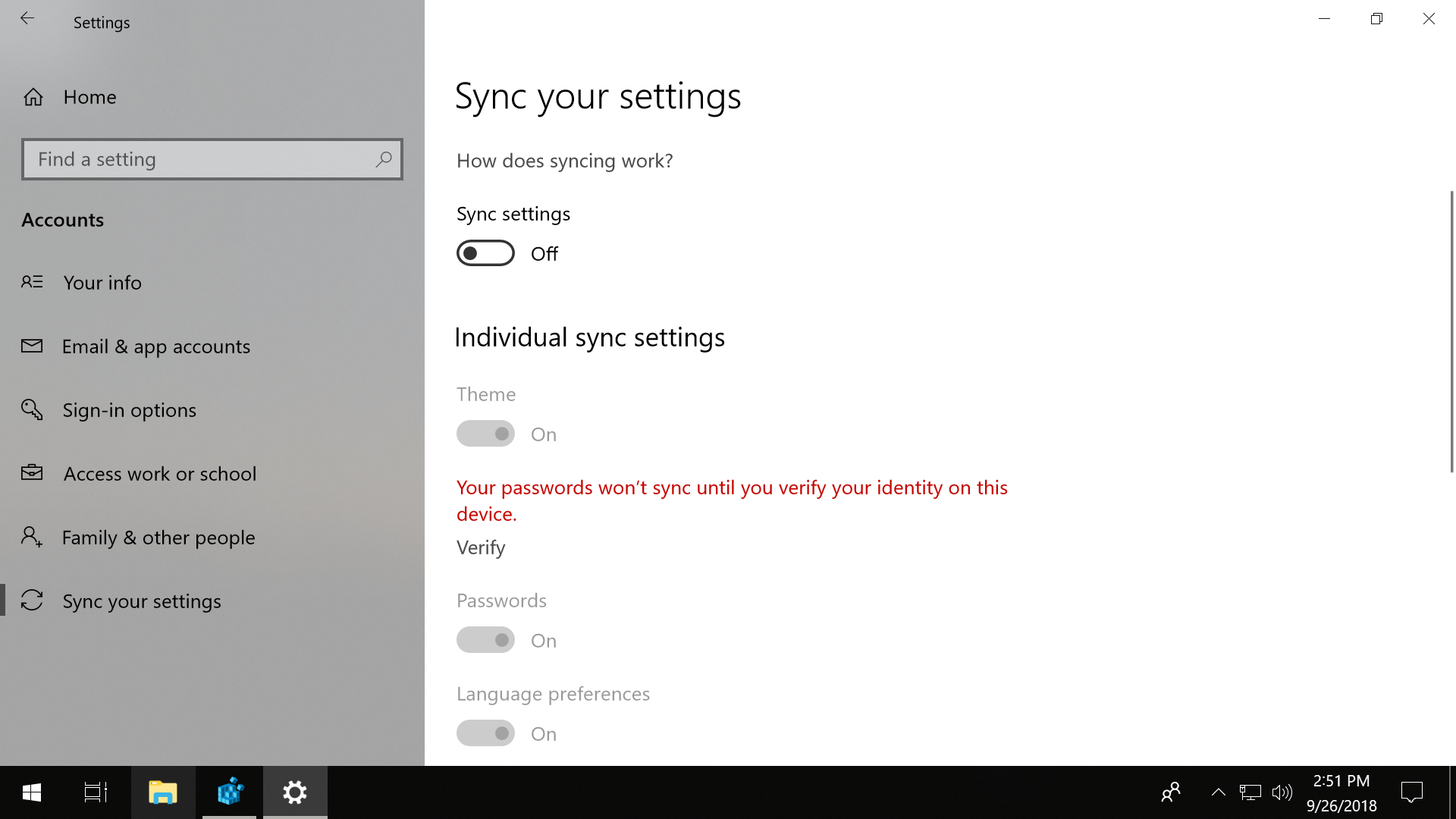
Certain Windows 10 apps can receive information, send notifications and be updated when they're not being used, including the Microsoft Store App and Skype.
Here's where to disable apps from running in the background: Settings app > Privacy > Background apps on the left > Toggle off each app individually. You can also do this via the Windows registry.
There are also other settings that may be of interest in this menu if you scroll through the left column of the Privacy section, including options for Location, Camera, Microphone, Notifications etc.
And here's some software that improves the privacy of Windows 10:Spybot Anti-Beacon | Destroy Windows 10 Spying | O&O ShutUp10
Shut down OneDrive completely
OneDrive is tightly built into Windows 10. It has its own node in File Explorer, and the OneDrive sync client runs automatically at startup, asking you to sign in. Of course, you don't have to use OneDrive if you prefer a cloud service from another provider, like Dropbox or Google Drive, but you can't uninstall it like a normal app.
And while you can change OneDrive settings so that the sync client doesn't run automatically at startup, that still leaves the OneDrive icon in the navigation pane of File Explorer. Fortunately, there are both registry and Group Policy options to completely disable OneDrive (also see this separate guide on removing items from the File Explorer).
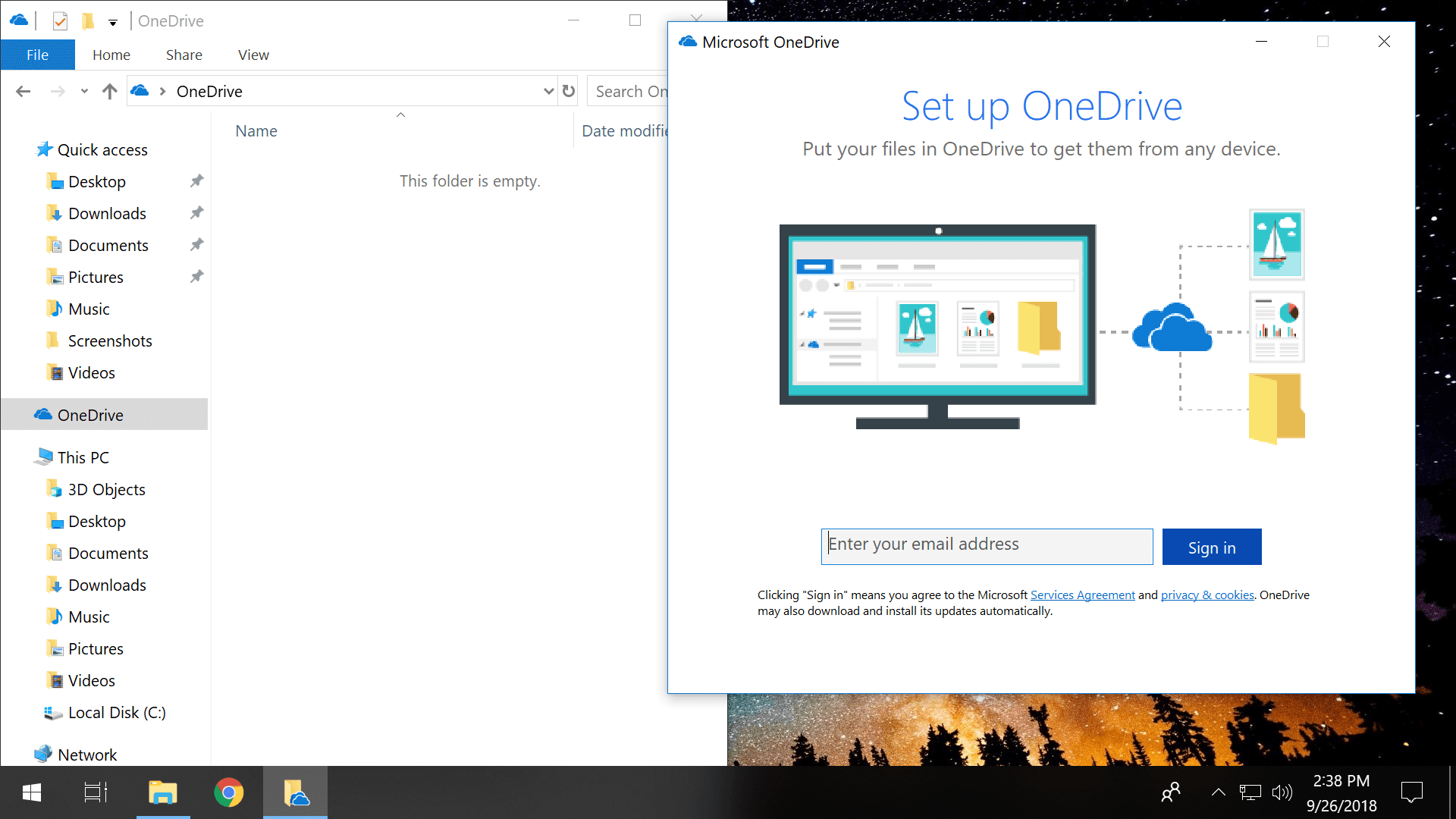
Disable from the Windows Registry Editor:
- Enter regedit into Start or Run to launch the Windows Registry Editor
- Navigate to HKEY_LOCAL_MACHINE\Software \Policies\Microsoft\Windows\OneDrive
- If there is no key for OneDrive, you'll need to right click the Windows folder and create a new key named OneDrive
- Add a new DWORD value as DisableFileSyncNGSCand set it to 1
Disable from the Group Policy Editor:
- Entergpedit.mscvia Start or Run to open the utility
- Navigate to Computer Configuration > Administrative Templates > Windows Components > OneDrive
- Double-click the policy "Prevent The Usage Of OneDrive For File Storage" and choose Enabledon the window that opens and click Ok
Disable 'Get Office' notifications
Windows 10 users who don't have Microsoft Office installed are offered to try Office 365, the subscription-based version of the ubiquitous productivity suite, and enjoy a month-long free trial. This is done by a "Get Office" application that sits there for the sole purpose of promoting it.
To stop these notifications head to Settings > System > Notifications & Actionsand switch off notifications for the "Get Office" app.
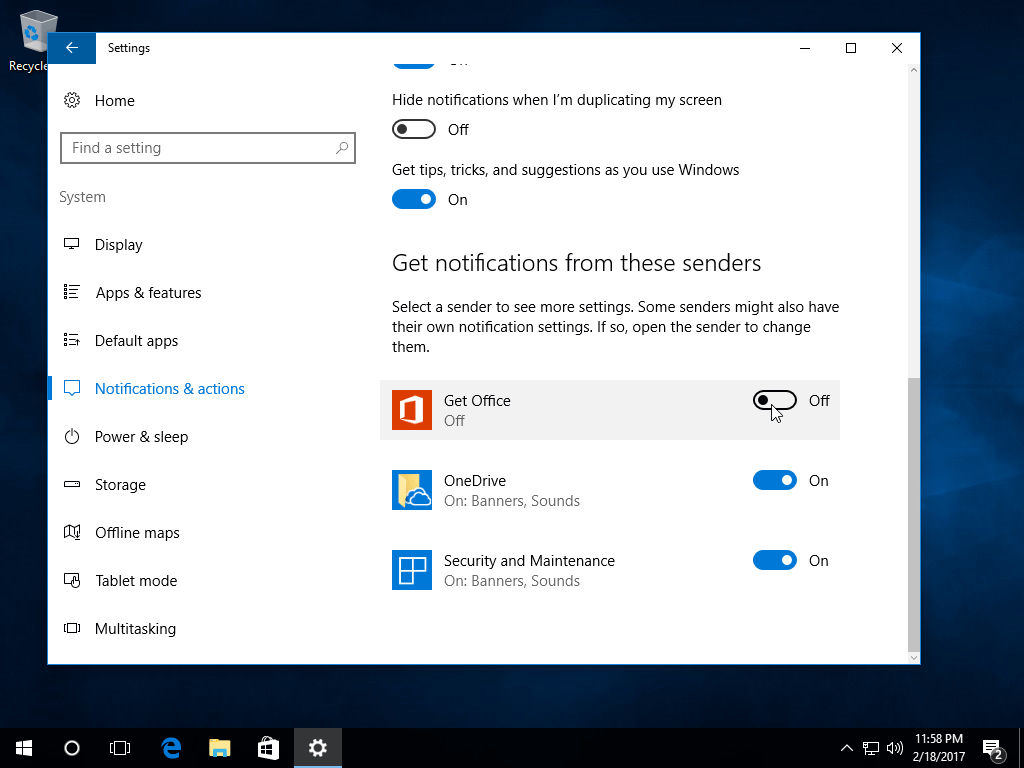
Get-AppxPackage|? name -like MicrosoftOfficeHub|remove-appxpackage
Disable Windows 10 telemetry
Microsoft notoriously increased the amount of user data that is collected by its operating system with Windows 10. You can limit the amount of information gathered by disallowing telemetry.
From the Group Policy Editor:
- Entergpedit.mscvia Start or Run to open the utility
- Navigate to Computer Configuration > Administrative Templates > Windows Components > Data Collection and Preview Builds.
- Double click Allow Telemetry, choose Disabled and click Ok.
From the Registry Editor:
- Search regedit via Start Windows > right-click and run as an administrator to launch an elevated Registry Editor.
- Go to HKEY_LOCAL_MACHINE\SOFTWARE\Microsoft\Windows\CurrentVersion\Policies\DataCollection
- Double-click AllowTelemetry and change its value to 0
More Useful Tips
- "Run as Administrator": What Does It Mean?
- Ways to Free Up Storage Space on Windows
- Essential Apps You Should Install on a New PC Running Windows or macOS
- Refresh Windows 10 to its default state in a few clicks, keeping your files and settings
友链
外链
互链
Copyright © 2023 Powered by
Get Rid of Windows 10 Ads, Office Offers and Other Annoyances-粲然可观网
sitemap
文章
61641
浏览
81123
获赞
567
热门推荐
Twitter and Facebook restrict sharing of disputed 'NY Post' article ahead of election
Facebook and Twitter restricted the spread of a disputed New York Postarticle on Wednesday.The articApple sues NSO Group for making iPhone spyware
Apple is pissed off. The iPhone maker announced Tuesday that it's suing NSO Group, the company behinApple's latest MacBooks Pro will be backordered until at least December
If you want to get your hands on a new Macbook Pro but didn'tplace a preorder, you may be out of lucMark Zuckerberg's 'killer use case' for the metaverse is dumb as hell
The metaverse will revolutionize your ability to be a jerk. That rather confusing pitch was made by'Archive zombies' will crawl back into your messages long after your interest has died
It was a Monday night at precisely 21:09 p.m. when I got a text from an unknown number."Hi," it declBest Cyber Monday kitchen deals 2024: Save on appliances, cookware, more
Table of ContentsTable of ContentsBest Black Friday kitchen deals 2024 Best cookwareHow Instagram's Close Friends feature can help your mental health
Essentials Weekspotlights unexpected items that make our daily lives just a little bit better.DuringBest Cyber Monday espresso machine deals: Get up to 53% off
Best Black Friday espresso machine deals Best overall dealDon't freak out about the latest scary screen time study
There's a new study out about child brain development and screen time. So naturally, there is panic.Pinterest is playing with live, shoppable videos. Here's how it works.
Pinterest, home to moodboards and visual inspiration, has launched a series of live and shoppable viFacebook, let me unlike this
As a teenager on Facebook, I liked any page I could get my grubby hands on when it was my turn to usBest Lego Black Friday deals: Star Wars, succulents, and more
The best Lego Black Friday deals you can get early: Top Walmart Lego dealAstrology tech can provide a safe space for the LGBTQ community, but there are limitations
Mashable is celebrating Pride Monthby exploring the modern LGBTQ world, from the people who make upRemember Apple's $19 cleaning cloth? Well, Samsung is giving away its own for free.
Mocking Apple is sometimes just too easy. In October, Apple stunned the tech world with another innoAll the Facebook apps are now officially made by 'Meta Platforms'
You may have forgotten about it (perhaps on purpose) but Facebook, the company, has recently rebrand
 科技创新!
科技创新!